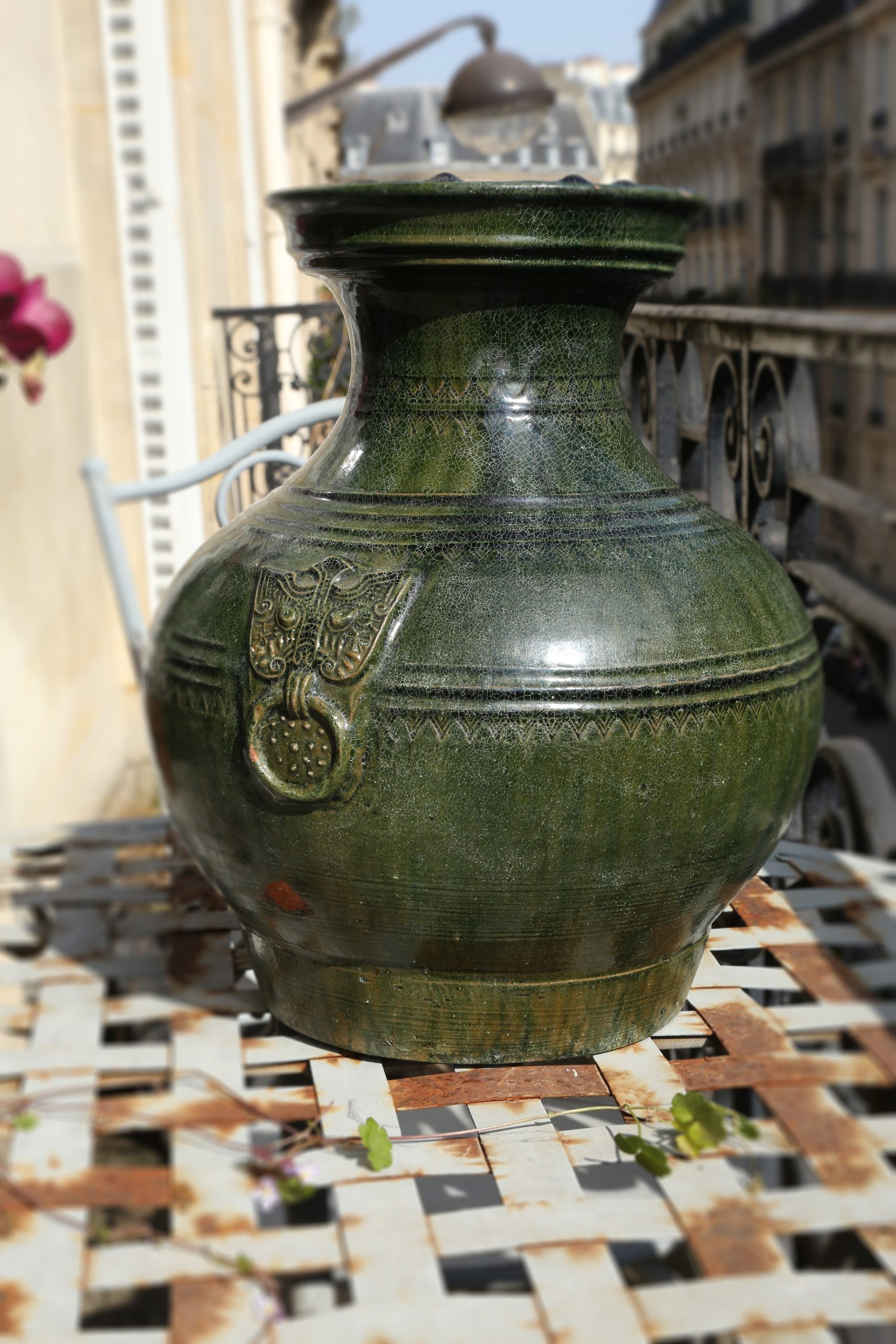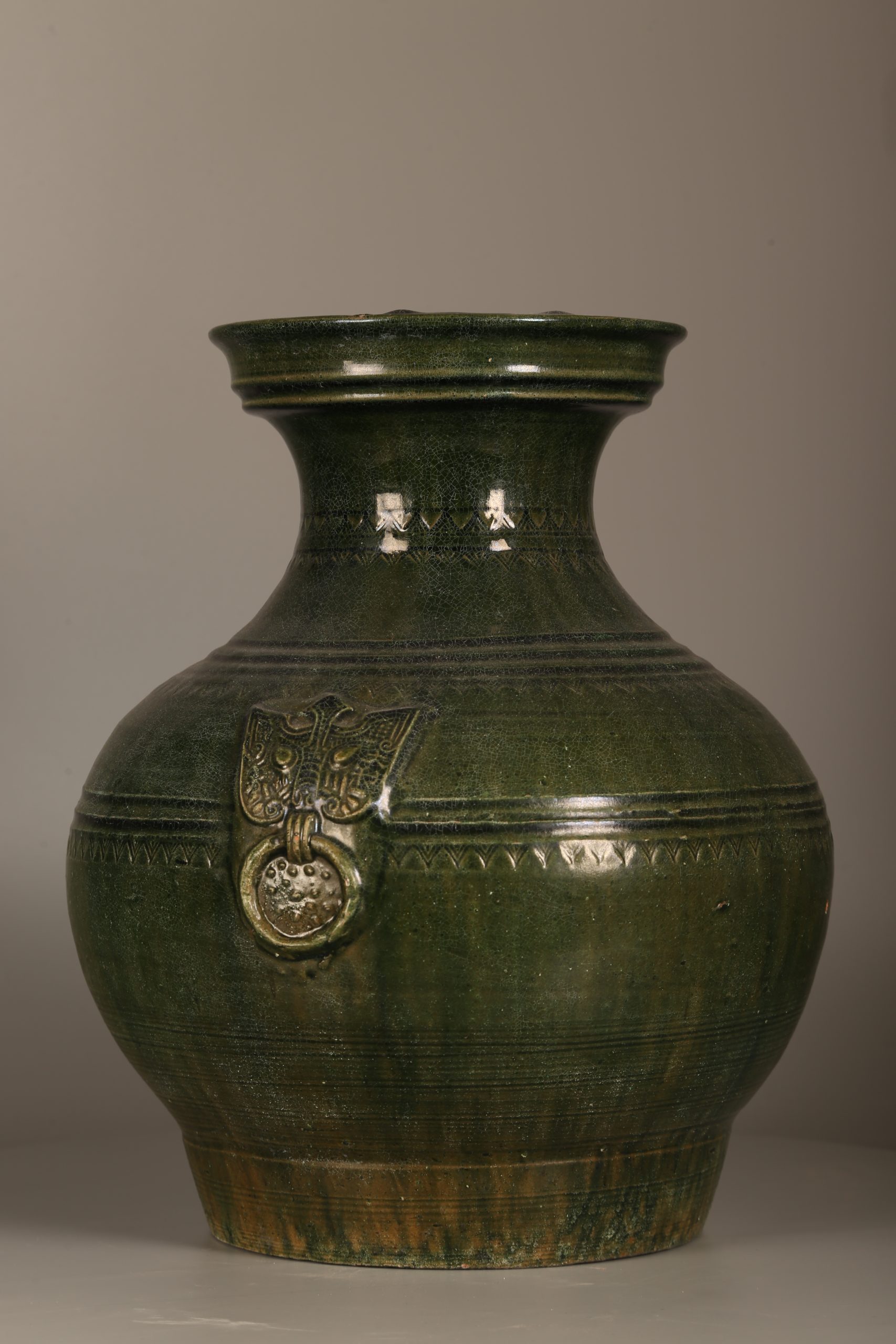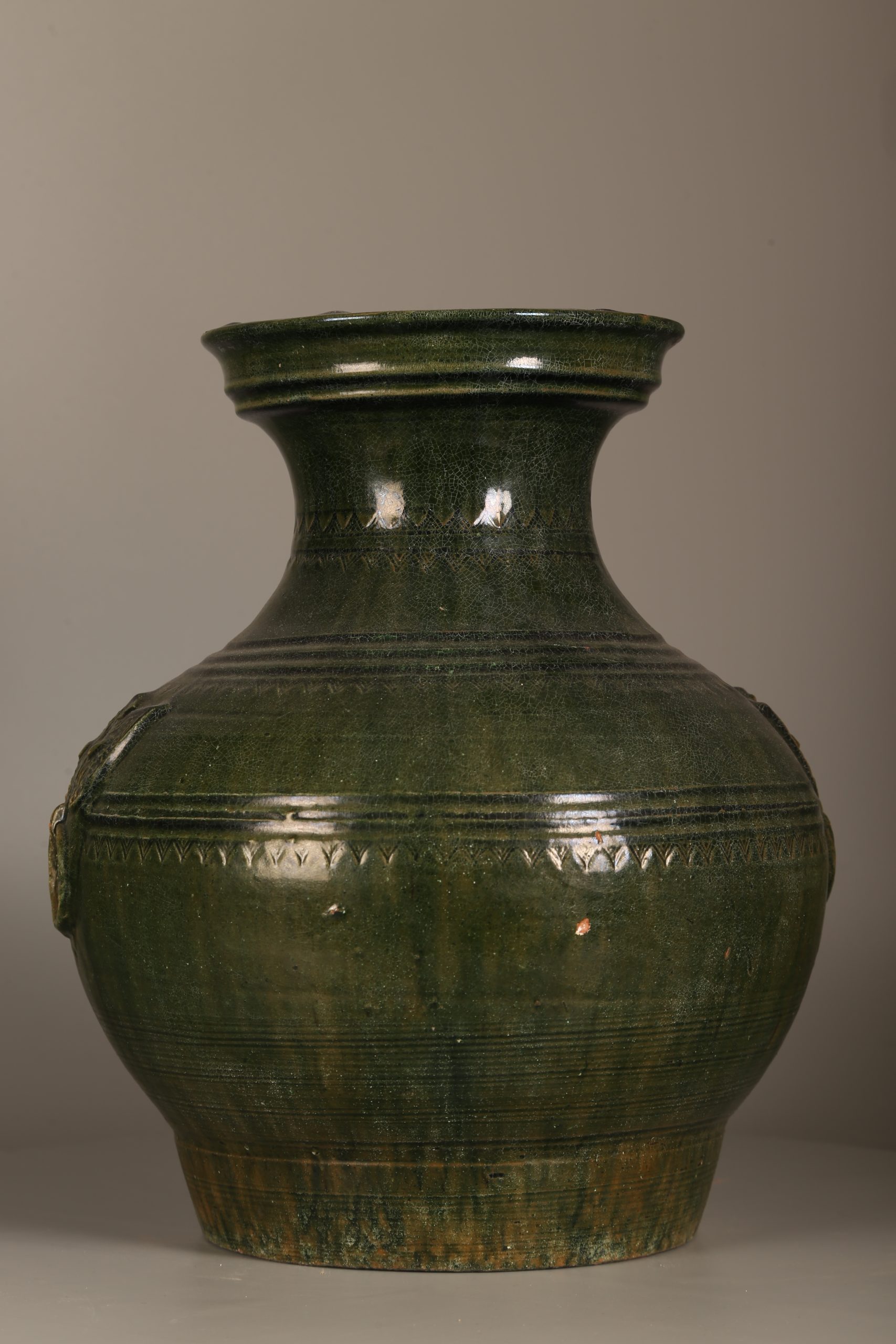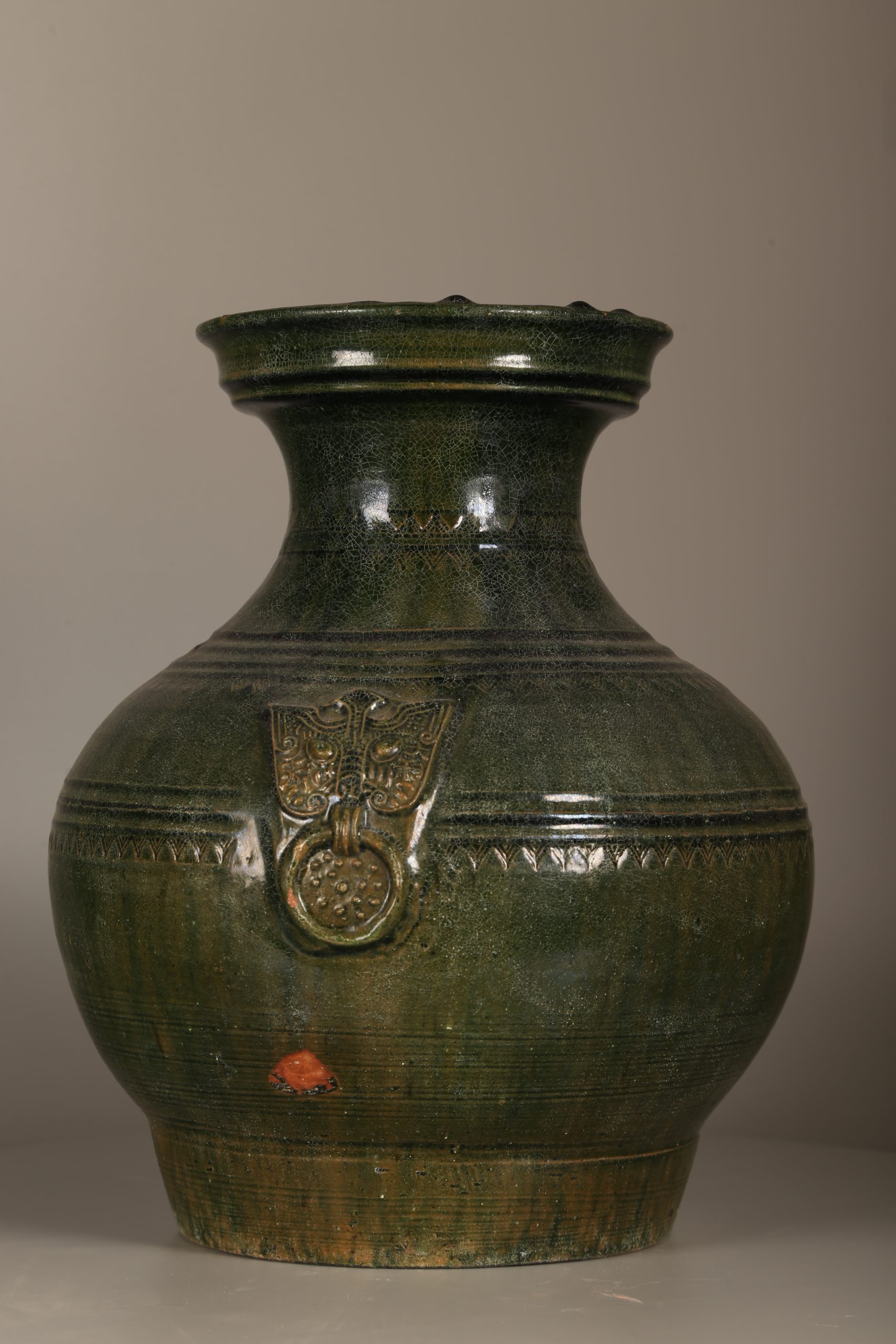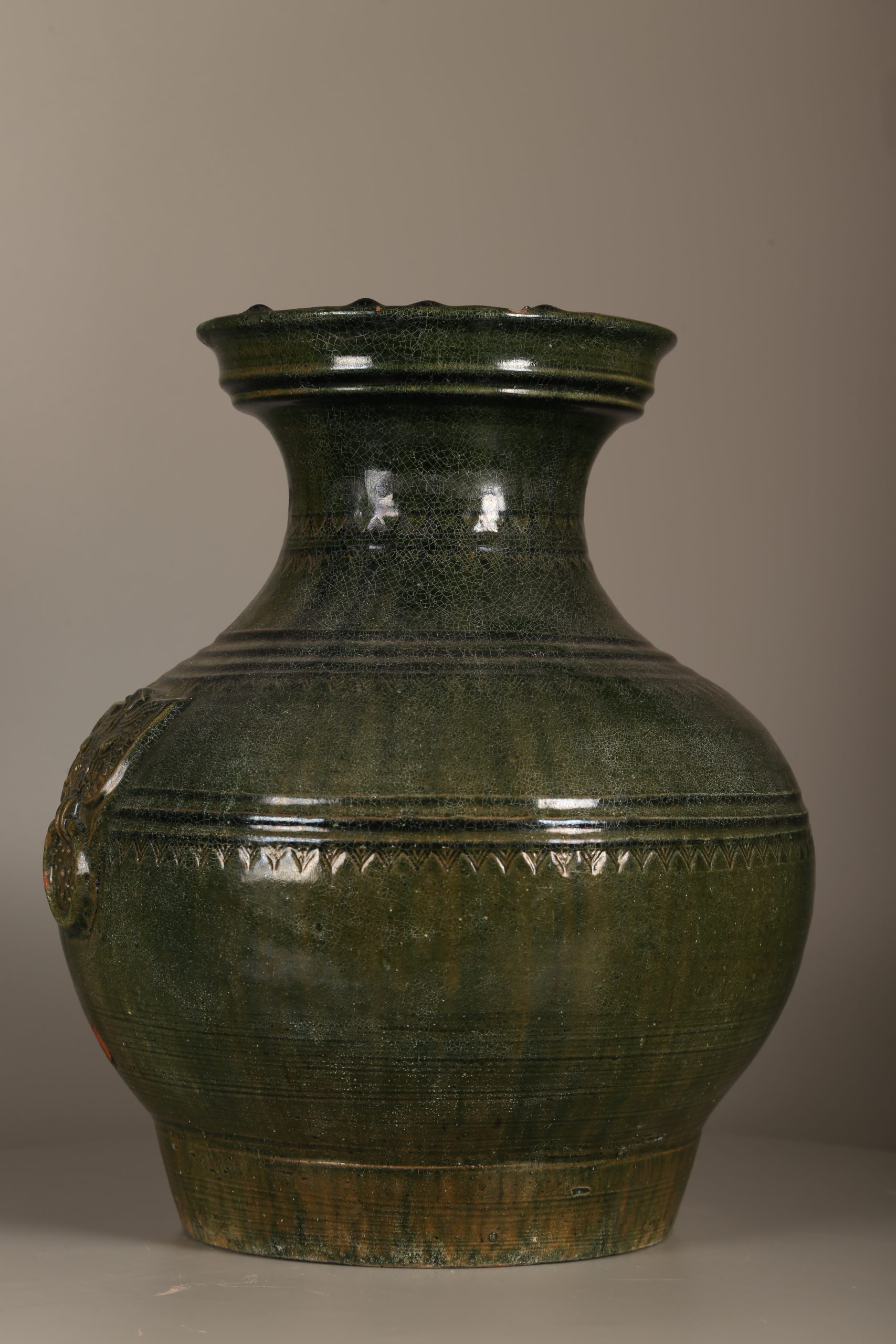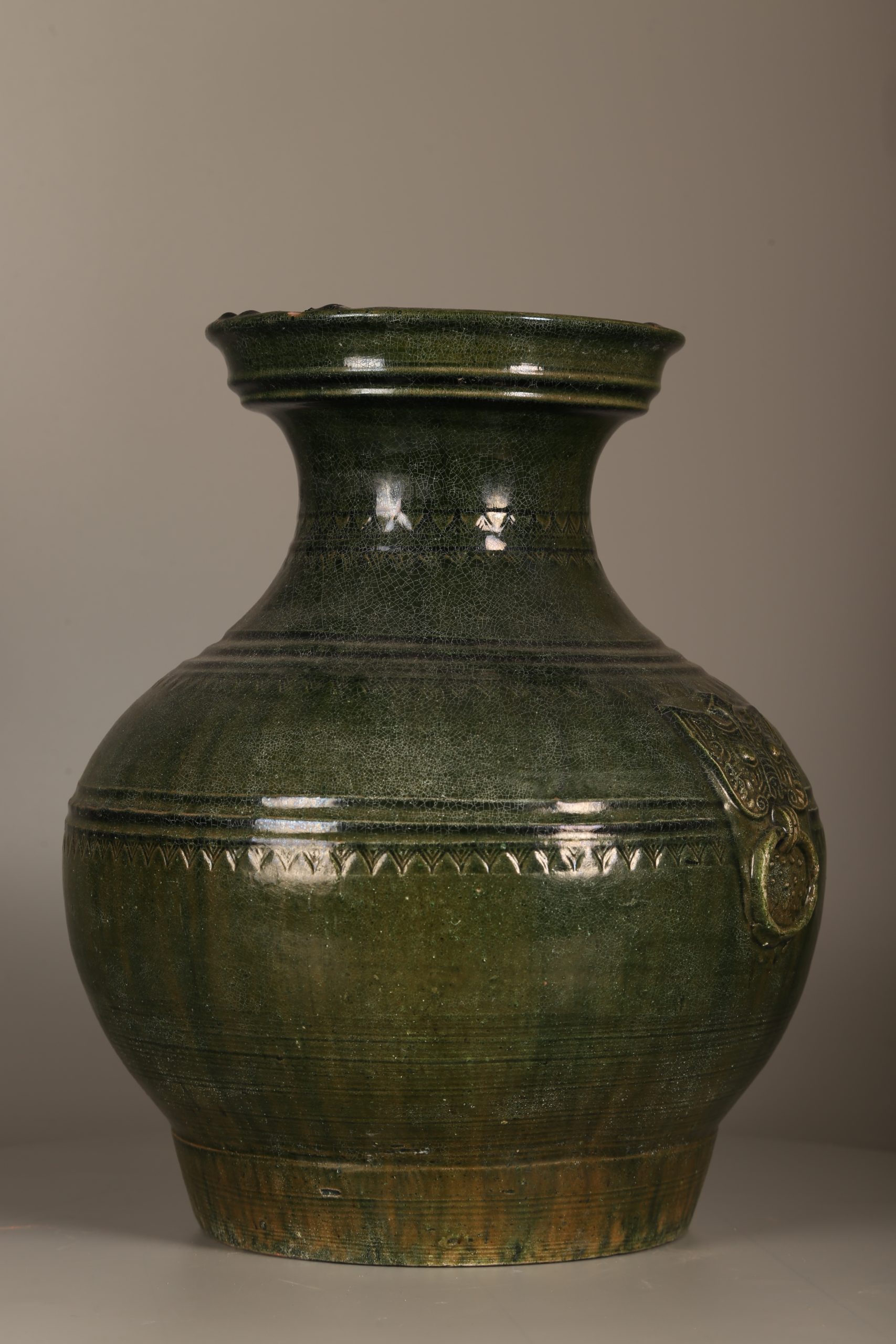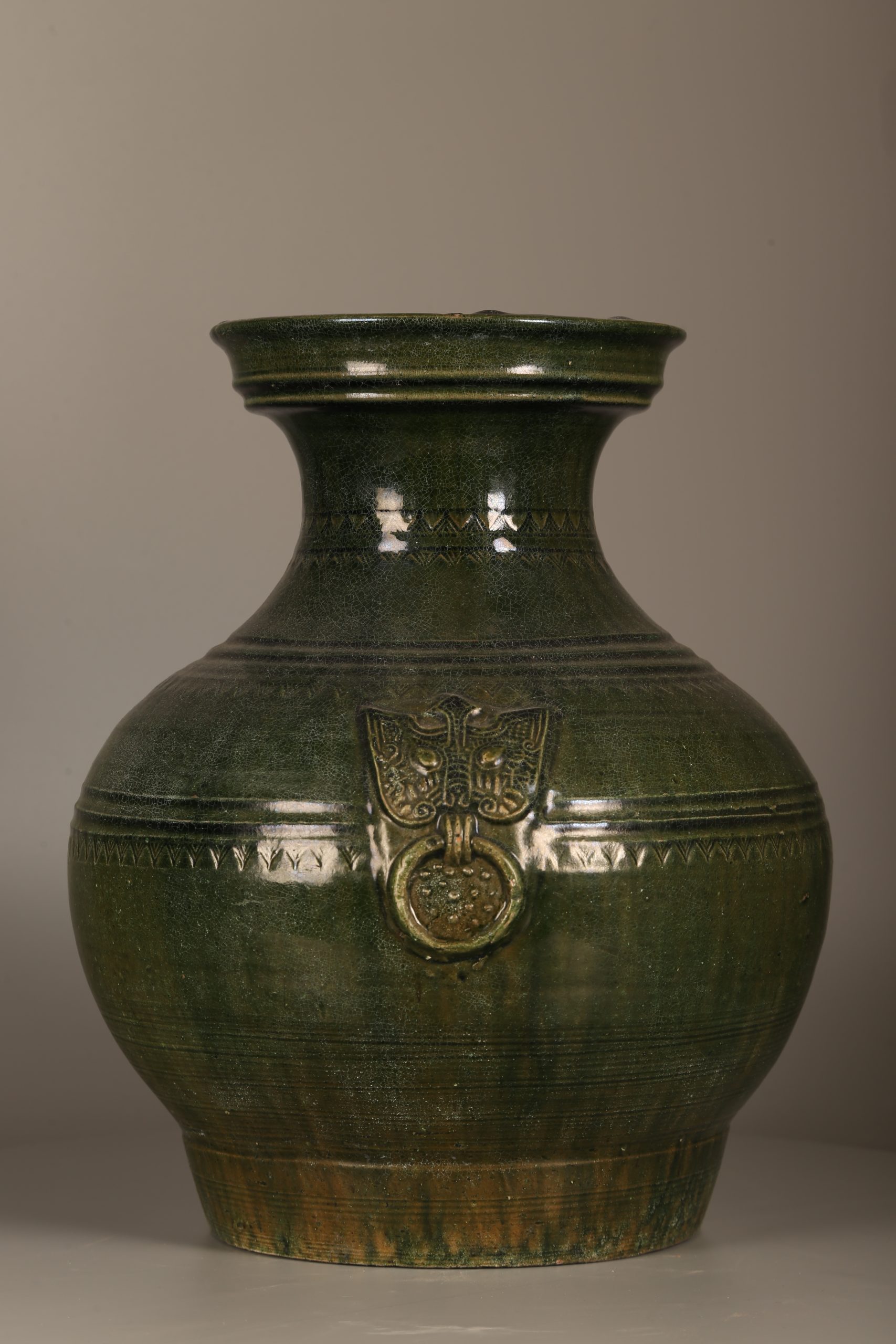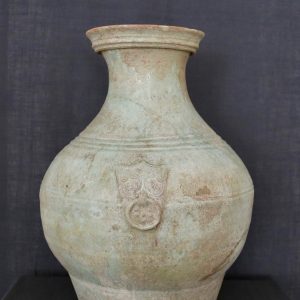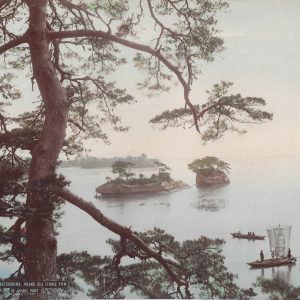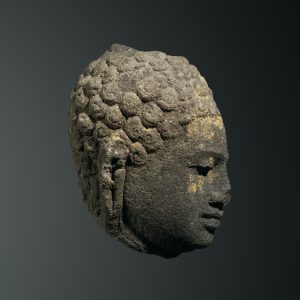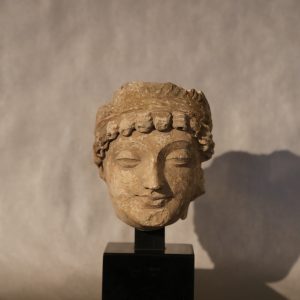Hu vase with deep green lead glaze
Glazed earthenware
China, Sichuan region
Han Dynasty (206 BC – 220)
H. 31 cm
360° view
Description
This hu 壺 vase made of terra-cotta is covered with a lead glaze, which gives it its green colour and shimmering appearance. This technique, developed by Han Dynasty (206 BCE – 220 CE) artisans – who were among the first to master lead-based glazes; gives their vases these deep green tones. The colour green has a particular symbolism in China, as it recalls the preciousness of jade, a material prized since ancient times. The interior has kept the natural colour of the clay.
The hu vase, whose typology dates back to Antiquity, corresponds to a wine vase, and can take on various forms. Here, the circular base is topped by a globular body and a narrow neck that widens slightly at the lip.
The body is decorated with moulded rings that separate smooth areas. Fine geometric motifs in slight relief complete this sober decoration. Between them, on either side of the shoulder, is a decorative handle surmounted by a Taotie mask 饕餮, a recurring ornament in the Chinese repertoire. The combination of the taotie and the knocker forms the so-called pushou motif.
This hu vase is in a very good state of preservation, apart from slight damage, notably to the body and lip of the vase.

